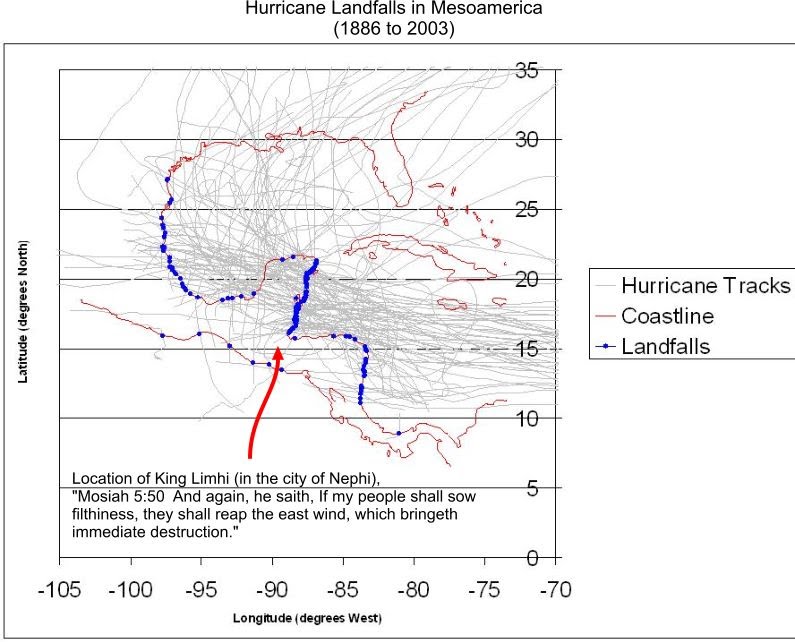[Mos 5:50] And again, he saith, If my people shall sow filthiness, they shall reap the east wind, which bringeth immediate destruction.
[Mos 7:51] And it shall come to pass that I will smite this my people with sore afflictions; yea, with famine and with pestilence; and I will cause that they shall howl all the day long.
[Mos 7:52] Yea, and I will cause that they shall have burdens lashed upon their backs; and they shall be driven before, like a dumb ass.
[Mos 7:53] And it shall come to pass that I will send forth hail among them, and it shall smite them; and they shall also be smitten with the east wind; and insects shall pester their land also, and devour their grain.
The jet stream moves west to east in both the northern and southern hemispheres, and it is the jet stream that causes weather fronts to move in a westward direction, not an eastward direction. The tropical easterlies do have winds that have an east-to-west direction, but these are very steady and not destructive. The backside of a low-pressure system can generate a damaging easterly wind. Hurricanes and typhoons travel in an east-to-west direction and generate damaging winds. Also, in the Middle East, winds from the east are drying winds and often bring locusts, so the destruction is not by the wind itself, but what the wind brings. In Hebrew "east" is plural and is a construction that is similar to our expression "in the day of the easterlies". Therefore, the reference refers to more than one east wind. Does the Isthmus of Tehuantepec narrow neck location satisfy the condition of multiple winds from the east that are destructive? Yes.
East Wind of Destruction (Isthmus of Tehuantepec)

(Tap to Expand)
Note: This graphic shows that South America shields Panama from almost all hurricanes. Only one hurricane has made landfall near Panama in over 120 years. Any area south of the Panama narrow neck (land of Nephi for example) has not seen any destructive wind from the east.
